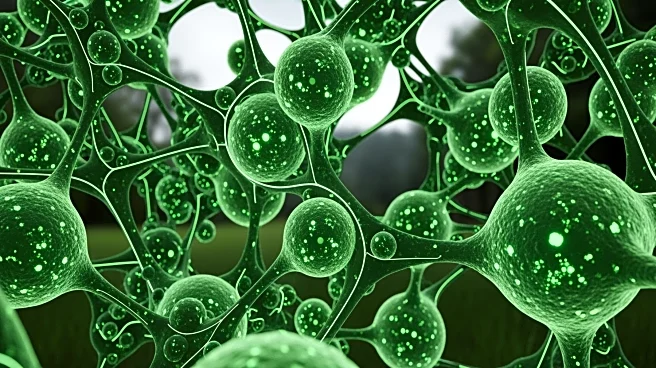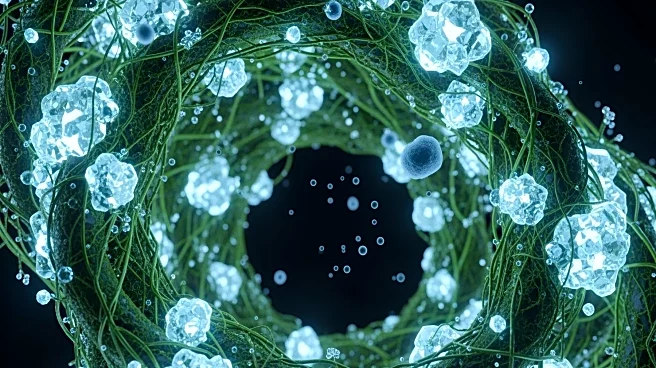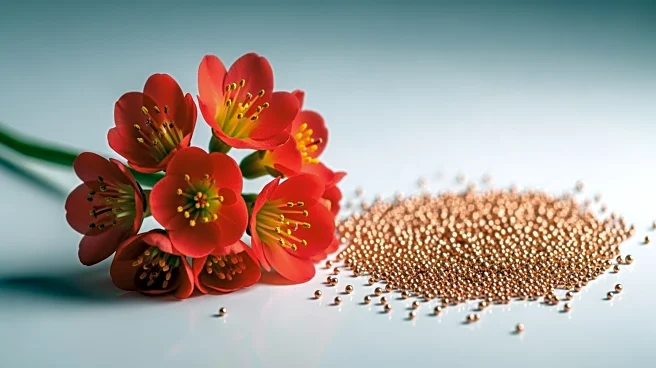What's Happening?
A recent study published in Nature explores the potential of Cosmos sulphureus stem fibers as thermally stable and eco-compatible reinforcements in biocomposites. These fibers, composed mainly of cellulose, hemicellulose, and lignin, offer desirable properties
such as tensile strength, thermal stability, and biodegradability. The study highlights the antibacterial activity of these fibers against Staphylococcus aureus, demonstrating a concentration-dependent response. At higher concentrations, the fibers showed significant antibacterial efficacy, although still lower than synthetic antibiotics like streptomycin. The fibers also exhibit antibiofilm activity, disrupting bacterial biofilm formation through phytochemical constituents. Additionally, the study examines the mechanical properties of the fibers, noting their moderate tensile strength and stiffness, which are suitable for non-structural applications. The thermal stability of the fibers is also analyzed, showing a high char yield and resistance to thermal decomposition, making them suitable for high-temperature applications.
Why It's Important?
The findings of this study are significant for industries focused on sustainable materials and eco-friendly solutions. Cosmos sulphureus fibers offer a renewable alternative to synthetic fibers, with applications in engineering, healthcare, and packaging. Their antibacterial and antibiofilm properties make them suitable for biomedical devices and antimicrobial packaging, addressing the growing demand for materials that can resist microbial colonization. The thermal stability and biodegradability of these fibers align with circular economy strategies, promoting the conversion of waste into functional products. As industries seek to reduce their environmental footprint, these fibers provide a promising option for developing sustainable composites that balance performance with ecological impact.
What's Next?
Future research may focus on enhancing the mechanical properties of Cosmos sulphureus fibers through hybridization with stronger fibers or chemical modifications. This could broaden their applicability in structural biocomposites. Additionally, further studies could establish definitive minimum inhibitory concentration (MIC) and minimum bactericidal concentration (MBC) values to better quantify their antibacterial potential. The integration of these fibers into commercial products may require collaboration between researchers and industry stakeholders to optimize processing techniques and ensure scalability. As interest in sustainable materials grows, these fibers could play a key role in advancing eco-friendly technologies.
Beyond the Headlines
The study underscores the importance of exploring natural fibers as viable alternatives to synthetic materials, highlighting the ethical and environmental benefits of using plant-based resources. The multifunctionality of Cosmos sulphureus fibers, including their antibacterial and thermal properties, positions them as a versatile material for various applications. This research contributes to the broader movement towards sustainability and resource efficiency, encouraging innovation in material science and engineering.













